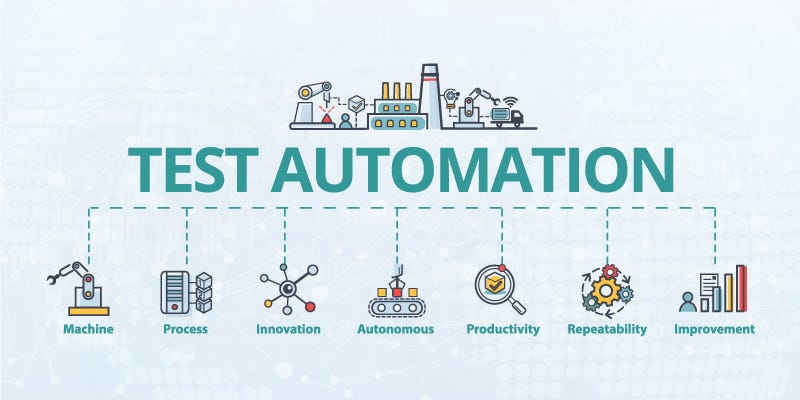Making Sure Success in Automation Testing: Secret Metrics, Challenges, and Solutions Every QA Team Must Know
In the world of software quality control, the landscape of automation testing is ever-evolving, demanding a careful strategy to ensure smooth procedures. Key metrics function as the compass assisting QA teams via the vast terrain of test automation, clarifying development and locations for improvement. However, obstacles impend big, commonly casting shadows on the path to success. By comprehending these difficulties and implementing efficient options, QA groups can browse via intricacies with finesse. The trip to mastering automation testing is paved with nuances that need an eager eye for surveillance, evaluation, and continuous renovation. automation testing. As the industry moves onward, the quest for optimum performance in automation screening continues to be a consistent quest, prompting QA groups to furnish themselves with the understanding and approaches necessary for triumph.
Significance of Secret Metrics
Recognizing the importance of crucial metrics is essential for evaluating the performance and effectiveness of automation testing procedures. Key metrics act as measurable measures that give important understandings right into different elements of the testing process, such as examination protection, test execution time, issue density, and examination case performance. By assessing these metrics, QA teams can determine bottlenecks, inadequacies, and areas for renovation within their automation screening structure.
One important element of vital metrics is their capacity to track progression and keep track of the general health and wellness of the testing procedure (automation testing). They enable stakeholders to make educated decisions based upon data-driven understandings, which can lead to extra reliable testing techniques and better source allocation. In addition, vital metrics can aid teams set practical objectives, gauge the success of automation initiatives, and demonstrate the ROI of automation screening efforts

Common Obstacles Encountered
Obstacles frequently encountered in automation testing procedures can substantially affect the total performance and efficiency of QA teams. One of the significant difficulties is the choice of the appropriate test cases for automation. Not all test instances appropriate for automation, and choosing the wrong ones can cause lost time and resources. In addition, maintaining test manuscripts can be an overwhelming task, especially as the application undergoes constant modifications. Examination manuscript upkeep calls for continual updates and adjustments to ensure they reflect the existing capability precisely. One more usual difficulty is the preliminary financial investment required for establishing automation frameworks and tools. This can be an obstacle for some organizations, particularly smaller sized ones with limited budgets. Automation testing might not cover all facets of testing, such as functionality and customer experience testing, which still call for manual treatment. Overcoming these obstacles calls for proper planning, tactical examination instance selection, robust upkeep procedures, sufficient resources, and a clear understanding of the restrictions of automation screening.
Reliable Solutions for Obstacles
To address the obstacles come across in automation screening, carrying out efficient options is necessary for boosting the effectiveness and efficiency of QA teams. One essential service is to buy robust training programs for QA groups to guarantee they have the essential skills to properly use automation tools. Training can link expertise spaces, improve understanding of automation structures, and improve scripting capabilities, inevitably causing much more efficient examination creation and implementation.
An additional essential option is to establish clear communication networks within the QA group and with various other stakeholders, such as developers and project supervisors. Efficient interaction assists in straightening expectations, sharing progression updates, and quickly dealing with concerns or obstructions that might occur throughout the automation testing procedure.

Tracking and Evaluation Methods
Applying reliable monitoring and analysis techniques is important for making sure the success and effectiveness of automation screening procedures. By utilizing surveillance tools, QA teams can track the efficiency of test manuscripts, determine bottlenecks, and identify areas for renovation. Real-time tracking enables fast detection of concerns, allowing rapid feedback and resolution. Furthermore, evaluating examination results and metrics gives useful insights right into the quality of the software program being evaluated and the effectiveness of the screening technique.
One trick technique in surveillance and analysis is using dashboards that combine pertinent metrics and KPIs in a visually easily accessible format. These control panels offer a detailed overview of test execution standing, test protection, problem fads, and various other vital details. Frequently reviewing and examining these dashboards can assist QA groups make notified choices, prioritize jobs, and optimize screening initiatives.
Furthermore, executing automated signals and notifications based on predefined limits can try these out boost positive tracking and prompt my latest blog post treatment. By setting up informs for performance variances or test failings, groups can deal with problems promptly and prevent them from intensifying. Overall, surveillance and analysis strategies play a crucial duty in ensuring the effectiveness and success of automation testing initiatives.
Constant Renovation Strategies
Enhancing the efficacy of automation screening procedures requires the regular refinement of methods and methods. Continuous enhancement methods are crucial for QA teams to adapt to progressing modern technologies and deliver high-grade software program items. One key approach to enhancing automation screening procedures is to conduct routine testimonials and retrospectives. By evaluating past testing cycles, teams can determine bottlenecks, inefficiencies, and areas for improvement. Implementing comments loops and incorporating lessons learned into future screening frameworks can yield considerable enhancements with time.

Verdict
In verdict, it is essential for QA teams to comprehend the essential metrics, obstacles, and solutions in automation testing to guarantee success. By carefully monitoring and examining information, implementing reliable solutions to usual challenges, and constantly enhancing methods, QA teams can optimize their screening procedures and provide high-grade software. Abiding by these techniques will ultimately result in extra reliable and efficient automation screening methods.
By evaluating these metrics, QA groups can recognize traffic jams, inadequacies, and areas for improvement within website here their automation screening framework.
Additionally, key metrics can assist groups set practical goals, determine the success of automation campaigns, and show the ROI of automation testing initiatives.
Difficulties typically come across in automation screening procedures can considerably impact the general performance and efficiency of QA teams. Automation testing may not cover all elements of testing, such as usability and user experience testing, which still require hand-operated treatment.In final thought, it is critical for QA teams to understand the essential metrics, challenges, and services in automation testing to guarantee success.